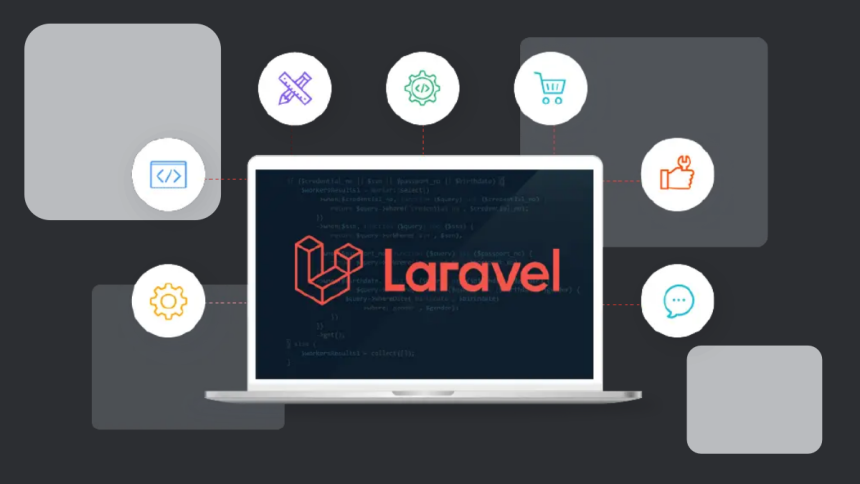Setting up a Laravel development environment involves several critical steps to ensure that developers can work efficiently and effectively. This comprehensive guide will walk through each essential phase, from installing prerequisites to optimizing the environment for Laravel, ensuring a smooth workflow for both new projects and ongoing development tasks.
Introduction to Laravel and Its Ecosystem
Laravel has emerged as a popular PHP framework due to its ability to facilitate rapid application development with its elegant syntax and a wealth of features. It simplifies several common web development tasks, helping developers to focus more on creating the actual functionality rather than boilerplate code. Laravel’s MVC architecture helps in organizing code beautifully, promoting a clean separation of logic and presentation, which is a boon for collaborative projects.
The framework is supported by a rich ecosystem that includes everything from a robust package system (Packagist) which houses thousands of Laravel-specific packages, to extensive deployment and testing tools. This ecosystem not only enhances Laravel’s capabilities but also ensures that developers have access to a plethora of tools and packages that can help solve nearly any problem they might encounter during development.
Understanding the architecture and the ecosystem of Laravel is fundamental for developers as it allows them to utilize the framework to its full potential. By leveraging its built-in functionalities and the wide array of third-party packages, developers can accelerate development cycles and enhance application performance, all while maintaining high standards of code quality and scalability.
Establishing a Laravel development environment is a comprehensive process that involves setting up the right tools and configurations to enhance development efficiency and application performance. With its extensive features and supportive community, Laravel continues to be a preferred choice for PHP developers seeking a robust framework for their web applications. For teams looking to refine their Laravel skills, working with experienced partners like Zibtek can provide additional insights and expertise, further accelerating development cycles and improving product quality. By taking advantage of Laravel’s comprehensive capabilities and integrating industry best practices, developers can craft secure, scalable, and efficient web applications.
Prerequisites for Setting Up Laravel
Before diving into Laravel, it is essential to set up the proper environment, which includes installing PHP, Composer, and other tools. Laravel requires PHP with a minimum version specified in its documentation, ensuring compatibility with various libraries and features. It is also crucial to have Composer installed on your machine, as it manages dependencies for PHP, allowing developers to easily install and update Laravel along with other required packages.
A web server such as Apache or Nginx must be configured to host Laravel applications, and setting up a database is also necessary, as Laravel supports several options including MySQL, PostgreSQL, and SQLite. These components are foundational to running Laravel applications and must be configured correctly to ensure that they interact seamlessly with the Laravel framework.
Selecting the right development tools also enhances the Laravel experience. Integrated Development Environments (IDEs) like PHPStorm or Visual Studio Code are highly recommended as they provide sophisticated code analysis, intelligent code completion, and powerful debugging tools. These IDEs are designed to facilitate the development process and support Laravel-specific workflows, making them invaluable assets in a developer’s toolkit.
Installing Laravel and Project Setup
Installation of Laravel is streamlined through Composer. By running a simple command, composer create-project –prefer-dist laravel/laravel yourProjectName, developers can set up a new Laravel project which includes all necessary dependencies. This command sets up a basic structure that serves as the foundation for all further development.
After installing Laravel, it’s essential to configure key settings which are stored in the .env file. This file holds sensitive information such as database credentials and environment-specific variables. Ensuring that these settings are accurate is crucial for the application to connect to other services correctly. Running php artisan key:generate is also necessary to secure your application sessions and other encrypted data.
For developers looking to extend the functionality of their applications, Laravel’s robust ecosystem offers various tools and packages. Laravel’s service providers are a central part of adding new features to the Laravel application. They tell Laravel to register various components, such as controllers, views, and other services into the application container. Developers can create their service providers to add custom functionality or utilize existing ones provided by Laravel or third-party packages.
Leveraging Laravel’s Web Server Configuration
Laravel’s built-in server is excellent for development and testing purposes. It can be easily started with the php artisan serve command, which launches a development server, making it easy to test the application locally. However, for production environments, more robust solutions like Nginx or Apache are necessary.
Configuring a web server for Laravel involves setting up document roots and server blocks correctly to handle Laravel’s public directory structure and rewrite rules. For Nginx, this involves configuring the location block to direct all requests to the index.php file within the public directory. Similarly, Apache users must ensure that the mod_rewrite module is enabled and properly configured to handle URLs as per Laravel’s requirements.
These configurations are crucial as they affect how web requests are handled and thus the overall performance and security of the application. Ensuring that the web server is optimized for Laravel not only improves response times but also helps in maintaining a secure environment for your applications to run.
Optimizing the Development Environment
For Laravel developers, it’s essential to streamline the development process as much as possible. Tools like Laravel Mix help in managing CSS and JavaScript assets, while other development tools like Laravel Dusk provide an expressive testing API for application features without the need for JavaScript. Setting up these tools properly can save a tremendous amount of time and effort during the development cycle.
Automating repetitive tasks using Laravel’s command scheduler and event listeners can significantly reduce the amount of boilerplate code developers have to handle. These features, when leveraged effectively, can lead to more maintainable and scalable codebases. Laravel’s extensive documentation provides detailed guidance on how to use these features to maximize their benefits.
Performance optimization is also crucial. Utilizing caching strategies, optimizing database queries, and implementing efficient routing are key aspects that need attention during the development phase. Laravel offers various tools to aid in these areas, ensuring applications run smoothly and efficiently.
Database Migration and Management
Laravel simplifies database operations with its migration and seeding systems. Migrations provide a version-controlled method to alter database schemas and are integral in maintaining sync across development teams. Running php artisan migrate executes migrations that adjust the database structure without manual intervention, which is crucial for maintaining consistency across environments.
Seeding the database with test data is another critical step during setup. Laravel’s seeders allow developers to create dummy data that is essential for testing purposes. This setup ensures that every member of the development team or any automated system can recreate a consistent database state with predefined data.
In addition to migrations and seeders, Laravel’s Eloquent ORM provides an elegant way to interact with the database using expressive, intuitive syntax. This can greatly reduce the complexity of database operations and makes maintaining and optimizing queries much simpler.
Advanced Features and Security
Laravel is equipped with robust security features that protect applications from common threats like SQL injection, cross-site scripting (XSS), and cross-site request forgery (CSRF). Configuring these features correctly is paramount to safeguarding the data integrity and privacy of users. Laravel automatically handles CSRF protection for all POST requests, while its ORM uses parameter binding to protect against SQL injection attacks.
Furthermore, Laravel’s broadcasting feature allows developers to implement real-time data functionalities easily, enhancing user experiences by providing immediate feedback or updates within the application. Using Laravel Echo, developers can smoothly integrate WebSockets with their applications to broadcast messages to clients in real-time.
The framework also supports advanced user authentication and authorization configurations, which are essential for applications needing fine-grained access control. These features are customizable and can be adapted to cover a wide range of scenarios, ensuring that only authorized users can access certain resources.
Final Thoughts
Finally, setting up a Laravel development environment effectively unlocks the full potential of this robust framework, enabling developers to produce high-quality web applications efficiently. Laravel’s intuitive design, combined with its comprehensive ecosystem, provides a powerful platform that streamlines development from conception to deployment. As developers continue to harness Laravel’s extensive features and the community’s collective expertise, they can expect to see enhanced performance, scalability, and security in their projects. Whether you’re building simple applications or complex enterprise solutions, Laravel stands out as a dynamic and versatile choice that supports continuous improvement and innovation in the world of web development.
Lynn Martelli is an editor at Readability. She received her MFA in Creative Writing from Antioch University and has worked as an editor for over 10 years. Lynn has edited a wide variety of books, including fiction, non-fiction, memoirs, and more. In her free time, Lynn enjoys reading, writing, and spending time with her family and friends.















